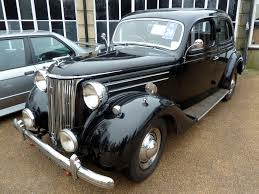-
Insurance
InsuranceAbout our productsLearn about insuringGet a quote Get current values, historical values, model history and more.
-
Valuation
ValuationHagerty valuation toolLook up a vehicle value Get current values, historical values, model history and more.
-
Events
EventsHagerty official eventsHagerty ClubhouseEvent calendar
-
Entertainment
EntertainmentMore to explore
- Portal login
1949 Ford Pilot
V8 4dr Saloon 3.6 L
Vehicle values by condition
Fair
Condition 4
£5,500
#4 cars are daily drivers, with flaws visible to the naked eye. The chrome might have pitting or scratches, the windshield might be chipped.
Good
Condition 3
£9,300
#3 cars could possess some, but not all of the issues of a #4 car, but they will be balanced by other factors such as a fresh paint job or a new, correct interior.
Excellent
Condition 2
£17,400
#2 cars could win a local or regional show. They can be former #1 cars that have been driven or have aged. Seasoned observers will have to look closely for flaws.
Concours
Condition 1
£20,800
#1 vehicles are the best in the world. The visual image is of the best car, unmodified, in the right colours, driving onto the lawn at the finest concours.
Insurance premium for a
1949 Ford Pilot V8 4dr Saloon 3622
valued at £9,300
£111.65
/ year*
History of the 1947 - 1951 Ford Pilot

1947 - 1951 Ford Pilot
The Ford Pilot was a four-door five-seater saloon, four-door five-seater estate, and two-door utility with a front engine driving the rear wheels. It was made from 1947 to 1952 as the flagship car from Ford of Great Britain.
August 1947 saw the debut of the Ford Pilot, Dagenham's first new large post-war model, although the steel body and chassis were derived from the pre-war Model 62. Initial power was from a 2.3-litre engine but after the first few examples, the Pilot gained a 3.6-litre engine. The equipment list included a heater, a rear window blind and an integral jacking system; the De Luxe version also boasted leather trim. The steering was via worm-and-roller with hydro-mech braking, a six-volt electrical system and transverse leaf springs with an anti-roll bar and hydraulic lever arm dampers front and rear. For export there was the chassis-cab which also formed the basis of several estate car conversions on; one was presented to King George VI in 1951. The saloon was often used by the police, and these were fitted with 12-volt electrics.
Production of the four-door Ford Pilot ceased in 1951 and the chassis-cab in 1952.
The very first Ford Pilots were powered by a 2,227cc SV V8 engine but most featured a 150 bhp 3,622cc SV V8 engine. The standard transmission was a three-speed gearbox with a steering column lever.
The Ford Pilot combines pre-war charm with a very flexible V8 engine and a decadently comfortable interior. The saloons are inevitably easier to source than the estates and commercial versions.
Potential buyers should examine the front wings, bumper bar, plus the B-pillars of the pick-ups and estate cars for corrosion, and the saloon's canvas roof panel for signs of water ingress. The Ford Pilot's V8 engine can be prone to rust in the exhaust manifolds. No new body panels are available but there is a very supportive owners' club in the form of the UK Region of the Early Ford V8 Club of America.
Rivals to the Ford Pilot include the Citroen Big Six Traction Avant; the Humber Super Snipe Mks I, II, and III; the Rover P3 and 75 P4; and the Wolseley 6/80.
Hagerty Newsletter
Get your weekly dose of car news from Hagerty UK in your inbox

ADVERTISEMENT